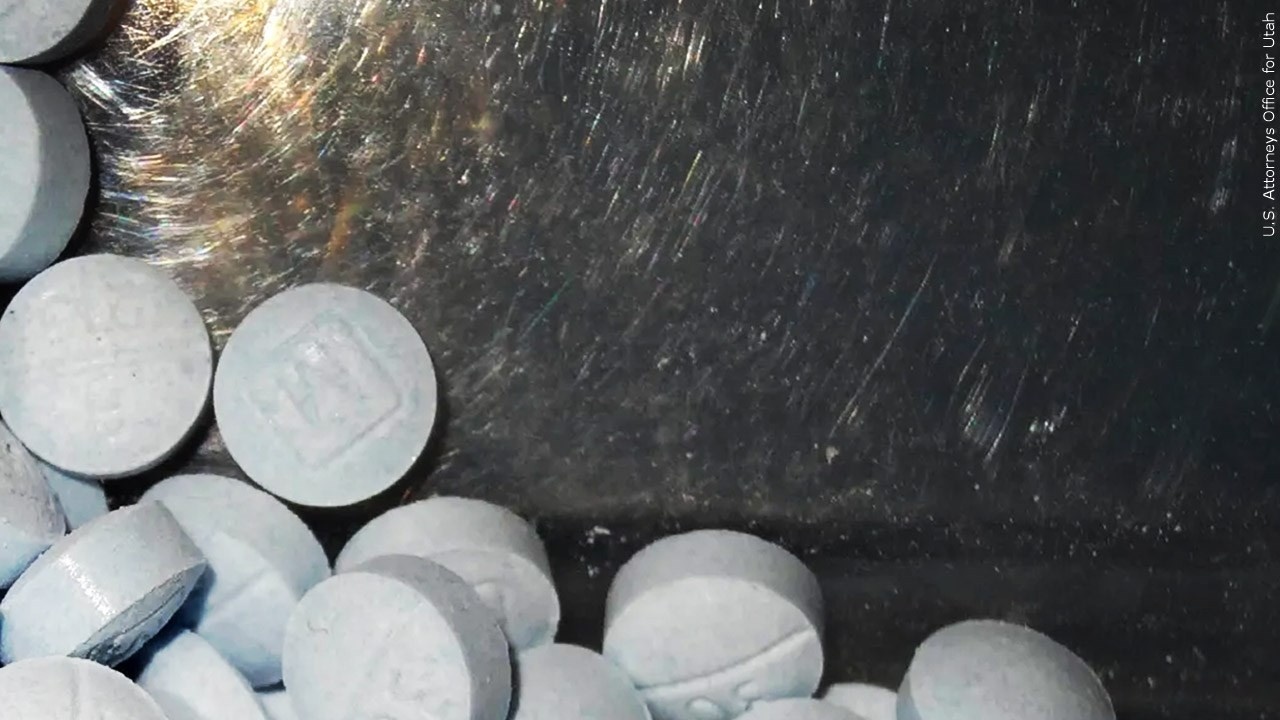A 20-year-old Minnesota man describes his recovery from addiction — as experts warn of Fentanyl’s deadly effects
[anvplayer video=”5131515″ station=”998122″]
Twenty year old Isaac — we’re not using his last name — is running for his life.
The Stillwater native is using physical training as part of his recovery from a three-year battle with Fentanyl.
“My first go at it, with Fentanyl was when I was about eighteen years old,” Isaac recalls. “At the height of my addiction, I was spending about $250-a-week on Fentanyl pills. I remember doing at least five to six pills a day.”
He says he’s been Fentanyl-free for five months now, after a friend connected him with Minnesota Adult and Teen Challenge, a faith-based recovery program.
“I had had enough. At this point, I was already just white-knuckling my way through my Fentanyl addiction,” Isaac explains. “Somehow I just stopped using it, because I knew it was going to kill me.”

Fake Fentanyl Pills (Credit: MGN)
Isaac, 20 years old, says he’s grateful to be alive.
But others have not been so lucky.
The latest numbers from the Minnesota Department of Health show in 2021, 834 people across the state died after using synthetic opioids including Fentanyl.
That’s a near 50% increase from the year before.
“It’s killing people,” declares Tom Truszinski, the CEO of Minnesota Adult and Teen Challenge. “What’s very obvious is that the war on drugs is alive and very, very well.”
Truszinski — now drug-free — says for 18 years, he abused heroin, alcohol, PCP and other drugs.
He says he’s especially worried about Fentanyl.
Truszinski says half of his 940 clients are in recovery from the synthetic opioid.
“The truth is, many of these people are taking Fentanyl without even knowing it,” he says. “It’s coming in counterfeit, thinking it’s Xanax or OxyContin, and it’s not, it’s actually Fentanyl straight.”
Law enforcement is also voicing concern.
Earlier this month, Minneapolis police said neighborhoods with the highest volume of shooting calls also have the largest number of Fentanyl pills recovered by officers.
“It tells me it’s a very powerful drug, and it’s something we have to pay attention to,” says David Ferguson, a Medicinal Chemistry Professor at the University of Minnesota. “This is a driving force and I think creating crime, and something that we as citizens need to take very seriously.”
Ferguson says Fentanyl causes a rapid, euphoric high that wears off in just an hour or two, triggering withdrawal symptoms.
Even small amounts, he says, can be deadly.
“A sesame seed of Fentanyl could easily produce an overdose,” Ferguson notes.
He says there’s no way to know exactly what is in those little pills — and that they’re extremely addictive.
“Looking at Fentanyl, it’s about one-hundred times more potent than morphine,” Ferguson says. “Tolerance develops and it develops quite quickly in certain individuals. So to get that same feeling, that same euphoria, or that same pain relief, you have to take a higher dose, and it continues to escalate.”
Isaac recalls well that feeling from when he was in the throes of his addiction.
He believes he overdosed at least once — blacked out, and woke up in the hospital.
But the lure of the drugs was powerful.
“I remember doing crimes just to get it,” he says. “When I was in my Fentanyl addiction, you name it, I would do it. There’s not much I wouldn’t do for Fentanyl, honestly.”
Minnesota Adult and Teen Challenge won’t discuss specifics about Isaac’s recovery.
The program has individual and group counseling, and uses medicine to help clients combat withdrawal symptoms and drug cravings.
Truszinski says Isaac’s story of staying clean of drugs should be an inspiration to others.
“For anyone that is using right now, it’s showing that there’s hope, that there is an opportunity for people to be well again,” he says. “That you can go from being a hopeless drug addict, to a drugless hope addict.”
Isaac has seven months to go to complete the program.
When he’s finished, he thinking he might considering counseling other young people and may embark on seminary studies.
Isaac also has a goal to become a graphic design artist.
For now, he says, he’s already found a powerful cure for his addiction.
“I would say there’s hope,” Isaac declares. “If you are coming off the street, if that is your situation, there’s so many opportunities. I just encourage everybody to get help because there is a new way to live.”
It you need help, it’s out there.
You can call the Substance Abuse and Mental Health Services Administration national helpline.
It’s available 24 hours a day, at 1-800-662-HELP.
More information is available here.